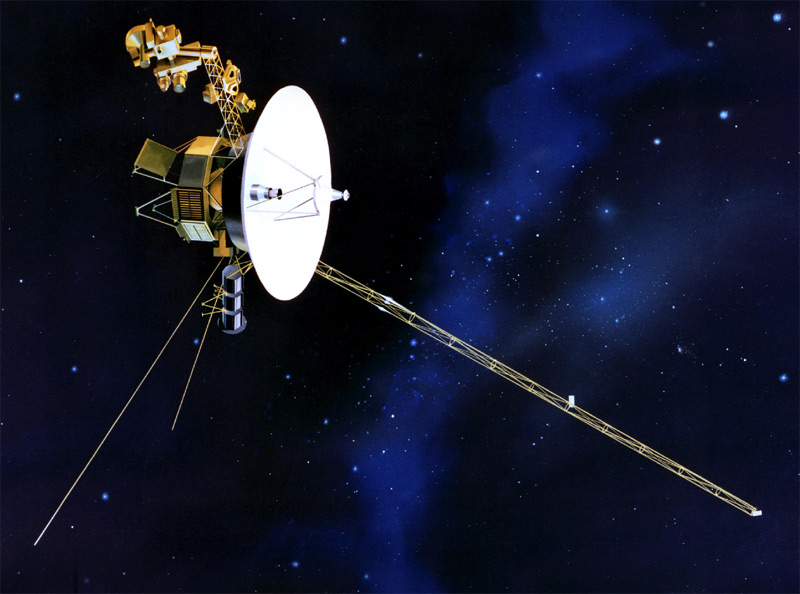[/caption]
The venerable Voyager spacecraft are truly going where no one has gone before. Voyager 1 has now reached a distant point at the edge of our solar system where it is no longer detecting the solar wind. At a distance of about 17.3 billion km (10.8 billion miles) from the Sun, Voyager 1 has crossed into an area where the velocity of the hot ionized gas, or plasma, emanating directly outward from the sun has slowed to zero. Scientists suspect the solar wind has been turned sideways by the pressure from the interstellar wind in the region between stars.
“The solar wind has turned the corner,” said Ed Stone, Voyager project scientist based at the California Institute of Technology in Pasadena, Calif. “Voyager 1 is getting close to interstellar space.”
The event is a major milestone in Voyager 1’s passage through the heliosheath, the turbulent outer shell of the sun’s sphere of influence, and the spacecraft’s upcoming departure from our solar system.
Since its launch on Sept. 5, 1977, Voyager 1’s Low-Energy Charged Particle Instrument has been used to measure the solar wind’s velocity.
When the speed of the charged particles hitting the outward face of Voyager 1 matched the spacecraft’s speed, researchers knew that the net outward speed of the solar wind was zero. This occurred in June, when Voyager 1 was about 10.6 billion miles from the sun.
However, velocities can fluctuate, so the scientists watched four more monthly readings before they were convinced the solar wind’s outward speed actually had slowed to zero. Analysis of the data shows the velocity of the solar wind has steadily slowed at a rate of about 45,000 mph each year since August 2007, when the solar wind was speeding outward at about 130,000 mph. The outward speed has remained at zero since June.
“When I realized that we were getting solid zeroes, I was amazed,” said Rob Decker, a Voyager Low-Energy Charged Particle Instrument co-investigator and senior staff scientist at the Johns Hopkins University Applied Physics Laboratory in Laurel, Md. “Here was Voyager, a spacecraft that has been a workhorse for 33 years, showing us something completely new again.”
Scientists believe Voyager 1 has not crossed the heliosheath into interstellar space. Crossing into interstellar space would mean a sudden drop in the density of hot particles and an increase in the density of cold particles. Scientists are putting the data into their models of the heliosphere’s structure and should be able to better estimate when Voyager 1 will reach interstellar space. Researchers currently estimate Voyager 1 will cross that frontier in about four years.
Our sun gives off a stream of charged particles that form a bubble known as the heliosphere around our solar system. The solar wind travels at supersonic speed until it crosses a shockwave called the termination shock. At this point, the solar wind dramatically slows down and heats up in the heliosheath.
A sister spacecraft, Voyager 2, was launched in Aug. 20, 1977 and has reached a position 8.8 billion miles from the sun. Both spacecraft have been traveling along different trajectories and at different speeds. Voyager 1 is traveling faster, at a speed of about 38,000 mph, compared to Voyager 2’s velocity of 35,000 mph. In the next few years, scientists expect Voyager 2 to encounter the same kind of phenomenon as Voyager 1.
The results were presented at the American Geophysical Union meeting in San Francisco.
Source: NASA

